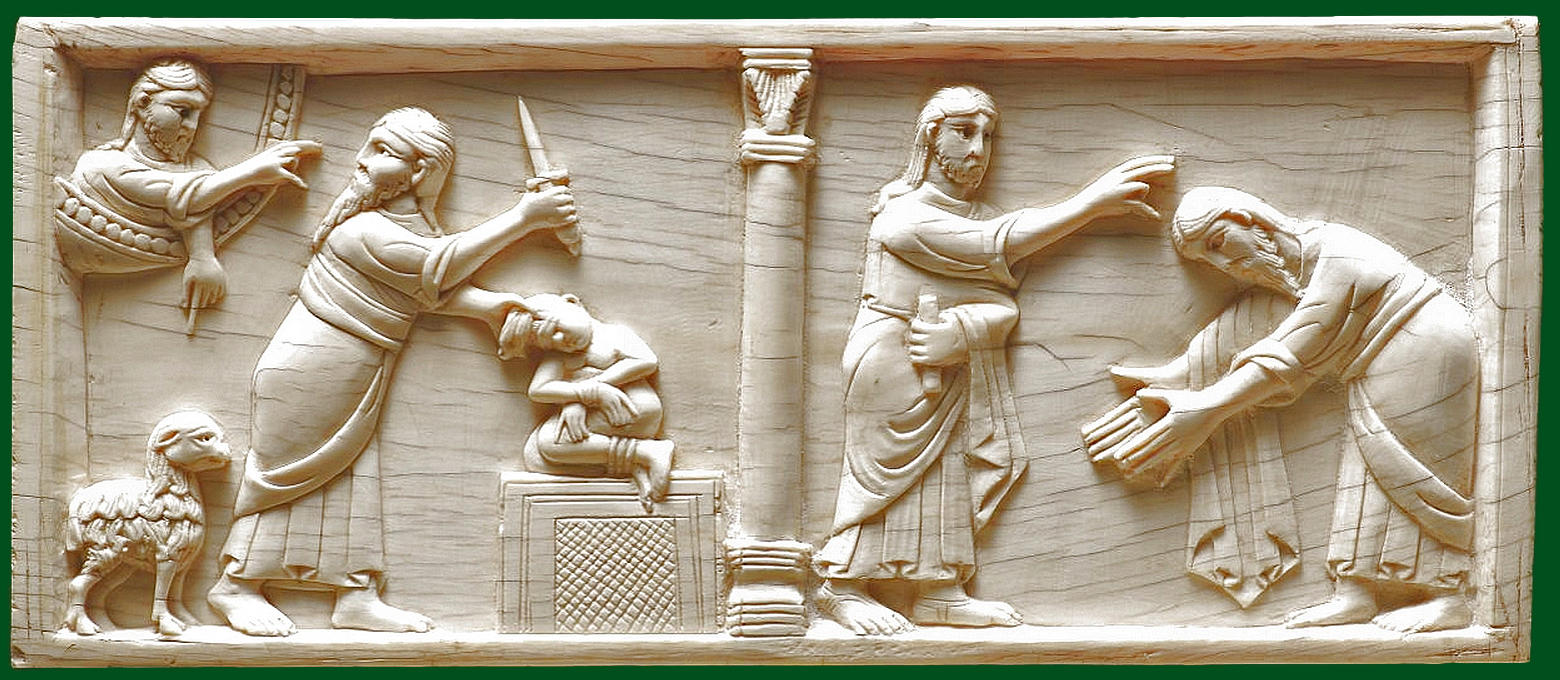
Join Amazon Prime - Watch Thousands of Movies & TV Shows Anytime - Start Free Trial Now
Ivory Altar Panels, 12th century
Museo Diocesano, Salerno, Southern Italy
OT 29 & 30 God Prevents the Sacrifice of Isaac - God blesses Abraham



Salerno Ivories
Museo diocesano, Salerno
Source
The knife is referenced as figure 603C in The military technology of classical Islam by D Nicolle
603A to 603E. Ivory altar-back, A - Guards at the Tomb, B - Herod's Soldiers, C - Sacrifice of Isaac, D - Guards at the Crucifixion, E - Massacre of the Innocents, 1100-1150 AD, Sicilian or south Italian, Cathedral Museum, Salerno (Car).
Vol. 1, p45, Slender-bladed knives that were clearly designed for stabbing, in other words for fighting, are as widespread in the art of Islam and its neighbours as are the single-edged varieties. Those from the early centuries tend to be more slender and quite short, often with both cutting edges curved slightly towards their point (Figs. 89, 205, 241 and 564). During the 12th and 13th centuries, however a broader more trangularly shaped blade, often with full quillons, appears in the hands of the warriors of Islam and some neighbouring areas under strong Muslim influence (Figs. 130, 153, 171, 295, 323, 531 and 603).